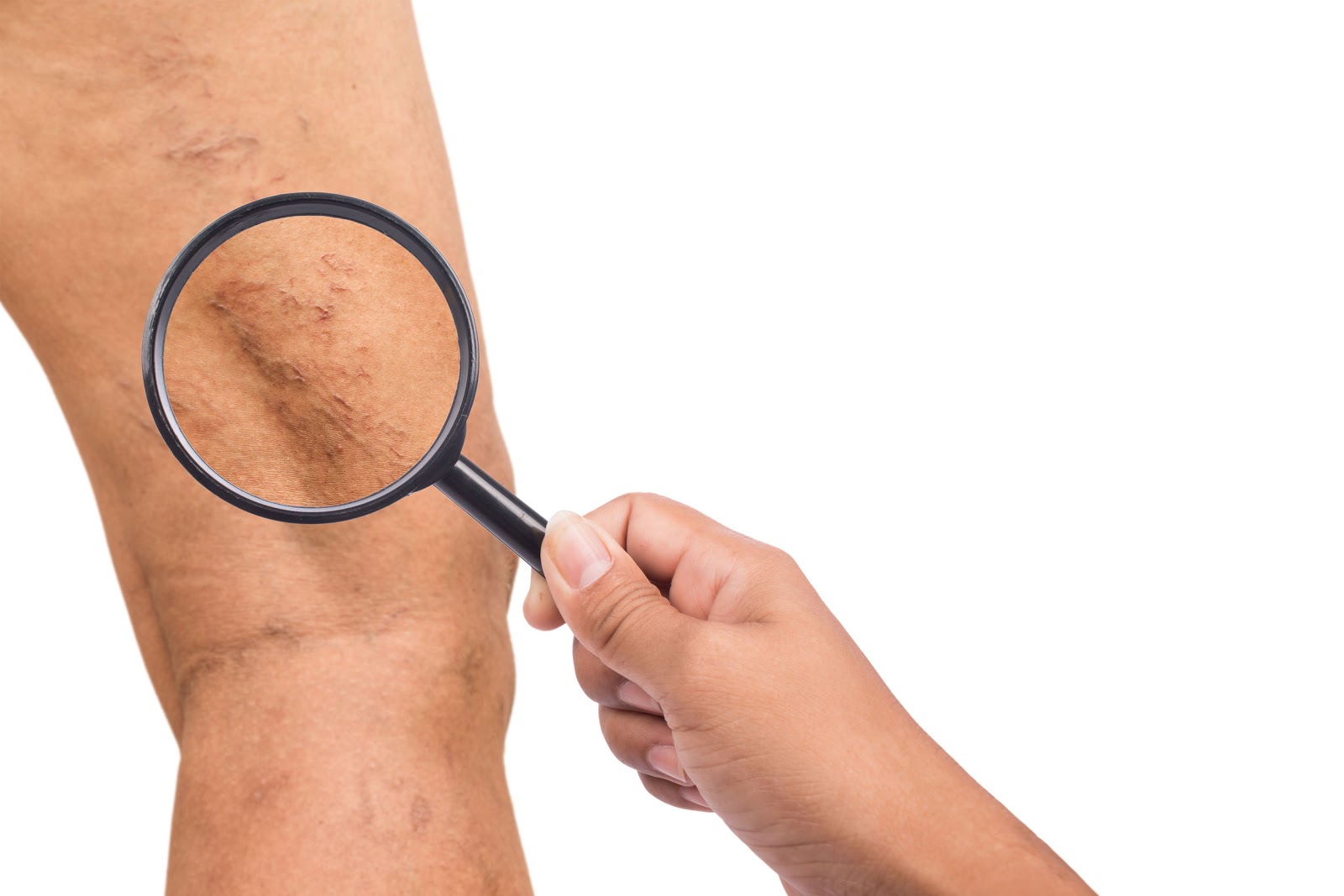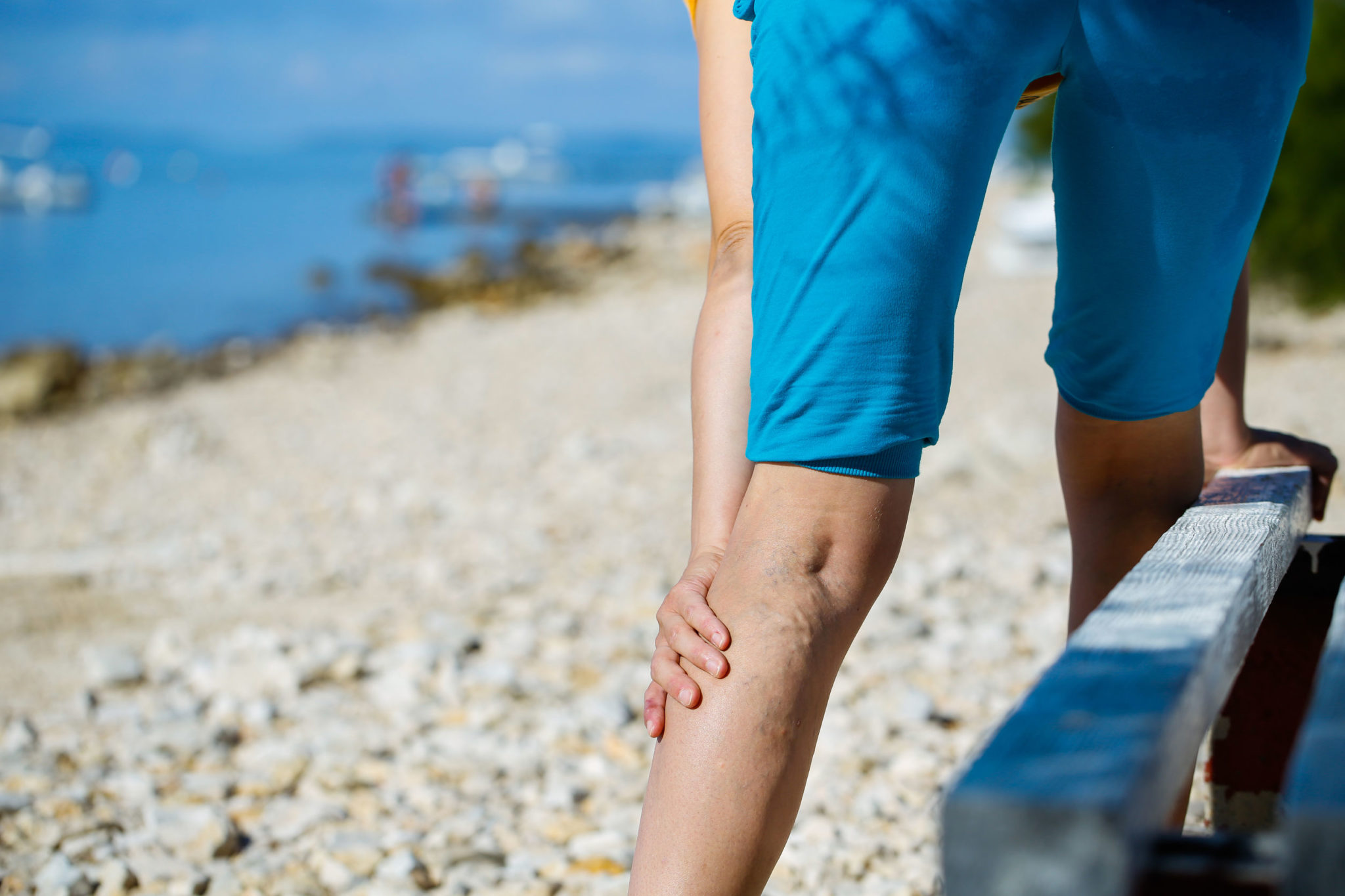Healthy veins remove waste products and direct blood flow to your heart and lungs. A series of valves lining the inside of your veins keeps your blood moving against the pull of gravity. As your muscles contract, the valves open to keep blood moving forward. When muscles relax, the valves close to keep blood from flowing in reverse.
Varicose veins are most often the result of valve damage. Once a valve fails to close securely, a condition known as venous insufficiency, leaking valves allow blood to flow downward towards your feet. When damage occurs in the tiny blood vessels near the surface of your skin, you will likely notice the familiar web-like configuration of spider veins (telangiectasia). When larger veins are affected, the veins below the damaged valves can bulge, twist, and cause a significant amount of discomfort.
Unfortunately, far too many people living with the discomfort of varicose veins unnecessarily delay medical intervention. Some put off having their varicose veins treated because they don’t think their veins are damaged enough to justify treatment. Others mistakenly assume they would have to dedicate a significant amount of time to recover after surgery. While surgery is still the best option in some cases, doctors today are more likely to recommend minimally invasive varicose vein treatment.
Continue reading
Your circulatory system relies on nearly 100,000 miles of blood vessels to deliver oxygen and nutrients throughout your body. While the blood-flow through your arteries is powered by the pumping of your heart, the veins directing blood back to your heart and lungs rely on a series of one-way valves. These valves defy the pull of gravity to keep your circulatory system functioning efficiently.
In healthy veins, these valves close completely to keep your blood from flowing downward towards your feet. When valves malfunction due to defect or disease, they can eventually cause a significant amount of discomfort and distress. Left untreated, vein disease can lead to a number of chronic health complications, including venous stasis ulcers.
Continue reading
Venous stasis ulcers are painful, slow-healing sores on the leg that occur from backwards blood flow in the veins of the limb. They typically occur on the lower part of the leg at or above the onside of the ankle when blood pools and can’t pump back to the heart, a condition known as chronic venous insufficiency.
In some cases, venous stasis ulcers can lead to serious complications, such as necrosis or severe ulceration. Fortunately, there are treatments for venous insufficiency that can prevent the future development of venous ulcers.
Continue reading
Deep vein thrombosis (DVT) happens when a thrombus, or blood clot, occurs in one or more of the deep veins in your body. While a DVT can form in other areas, they most commonly occur in the legs.
Though DVT typically causes leg pain or swelling, instances may also occur without symptoms, making them much harder to detect. DVT usually develops as the result of medical conditions that affect the way the blood clots or as a result of sitting for extended periods of time.
Left untreated, a DVT blood clot can break off and travel to the lungs, causing a pulmonary embolism, which is life-threatening. It can also lead to complications in the legs, such as post-thrombotic syndrome and chronic venous insufficiency.
Fortunately, a DVT is preventable, and it is treatable if discovered early.
Continue reading
Varicose veins and spider veins are unsightly and uncomfortable conditions that affect many people, and, in the case of varicose veins, they can lead to serious complications. To help alleviate the symptoms of varicose veins, you may consider laser or surgical procedures that are designed to relieve pressure on the veins and promote better circulation.
Fortunately, there are many different types of vein treatments to choose from, and they can all be performed on-site at a vein treatment clinic. The recovery time is minimal as well, so you’re able to return to your normal routine in no time.
If you’re considering vein treatment, take a look at this guide to vein conditions, vein treatments and what to expect before, during and after your surgery.
Continue reading


